Shifting Mindsets Through Growth and Experience
Consider this.. while the core principles around demand generation and lead generation mostly remain the same, the tactics we utilize have vastly changed over the course of the last ten years. The idea of the marketing funnel now seems almost too simple to convey the plethora of ways a brand can engage with a customer before they convert. Combine that with the rise of social media as a dominant force of worldwide communication, entertainment and controversy – and you’ve got a fundamentally changed universe of how businesses interact with their customers.
The systems involved in creating business demand connect in new ways everyday – which only reinforces the importance of creating great user experiences for prospects as a core tenet of any demand strategy. When thinking visually, the conversion event is shown below as the intersection of intent, user experience and value.
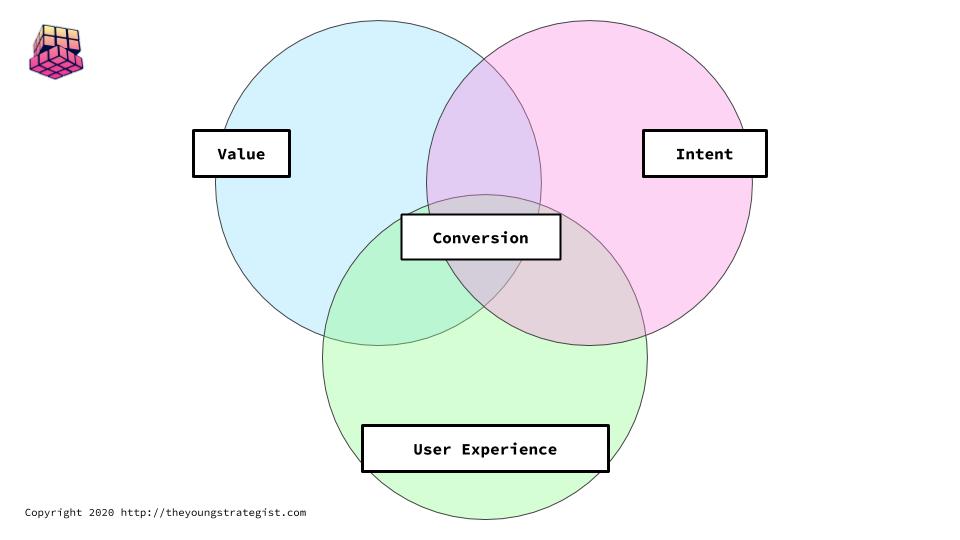
Great Demand Gen Strategies in the 2020’s Will Need To Be All Hands On Deck – No Bullsh*t
My favorite motto when working on a Demand Gen team used to be #NoLeadLeftBehind.. but now I think it should be appropriately shifted to #NoLinkLeftBehind. While collecting every viable lead in some sort of database is the gasoline of demand generation, being able to measure quality and extract insights is what allows teams to scale – and everyone in Marketing can pitch in.
MINDSET SHIFT: When a prospect’s intent is supported by content that delivers immediate value on channels creating frictionless user experiences, opportunities are generated for engagements leading to a conversion.
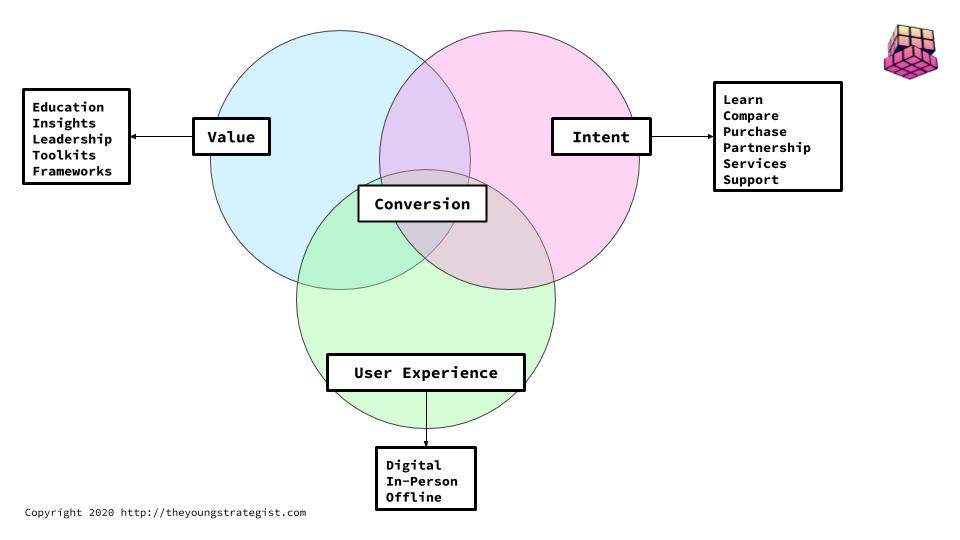
Intent
When thinking about the reasons why a customer is led to a brand in the first place, it’s important to reframe the idea of how we match prospect intent to content marketing strategies. Not every interaction should be used as an opportunity to sell. Utilizing too many channels of engagement for direct sales tactics will cheapen the value of the right pitch – and will erode the trust that potential customers have in a brand to deliver immediate and/or long-term value.
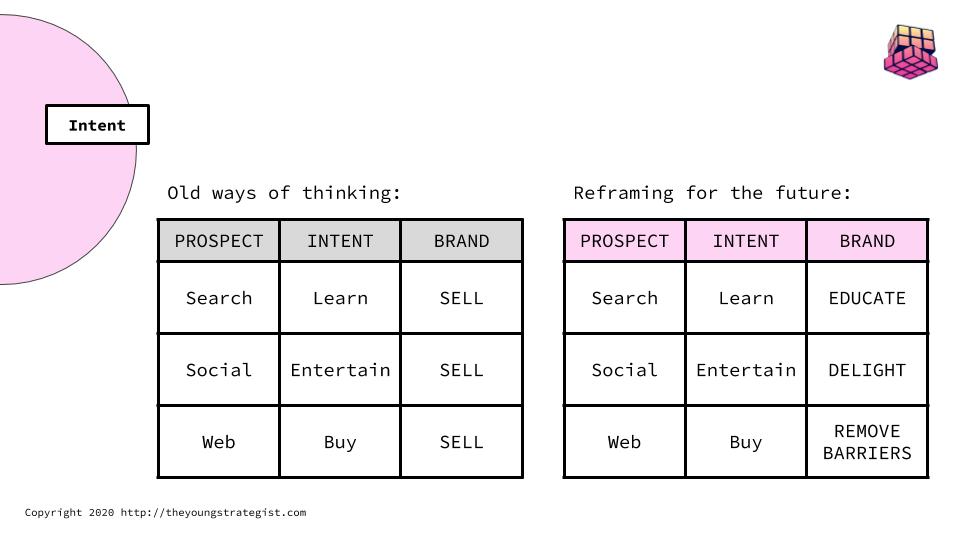
User Experience
Creating the right user experience will always start with a thorough audit of a product’s customer and the personas that are targeted. Once the needs of the customer are understood, developing a cohesive experience through the customer journey should have three goals:
- Be Frictionless – Meet the customer where they are and experiment and test with new channels. Create fast, low-touch experiences with clear messaging that also benefits the sales organization; by having fewer steps, processes are easier to pivot, increase volume, or automate.
- Be Authentic – Authenticity is important because prospects are inundated with waves of different messaging everywhere they go: cut through the BS and say “hello” next time. Be clear on company values and remember that algorithms are increasingly seeking quality over quantity when it comes to web content.
- Get Personal – Be personal, and not that fake business personal. Allow content creators to really put themselves into it and embrace what their unique personalities have to offer. Diversity is beautiful and should be celebrated every day. Actively seek new opportunities to welcome different perspectives into thought circles.
When I think of a brand that does this well, Joanna Gaines and the Magnolia Network come to mind. The Gaines family has become worldwide stars through their TV show, and the duo in charge have pioneered their brand into a network of experiences for their customers. These experiences are curated to give you that warm, home-cooked apple pie feeling that you get as soon as Jo and Chip smile back at you; which is incredibly effective, as the couple now has a reported net worth of $20 million combined.
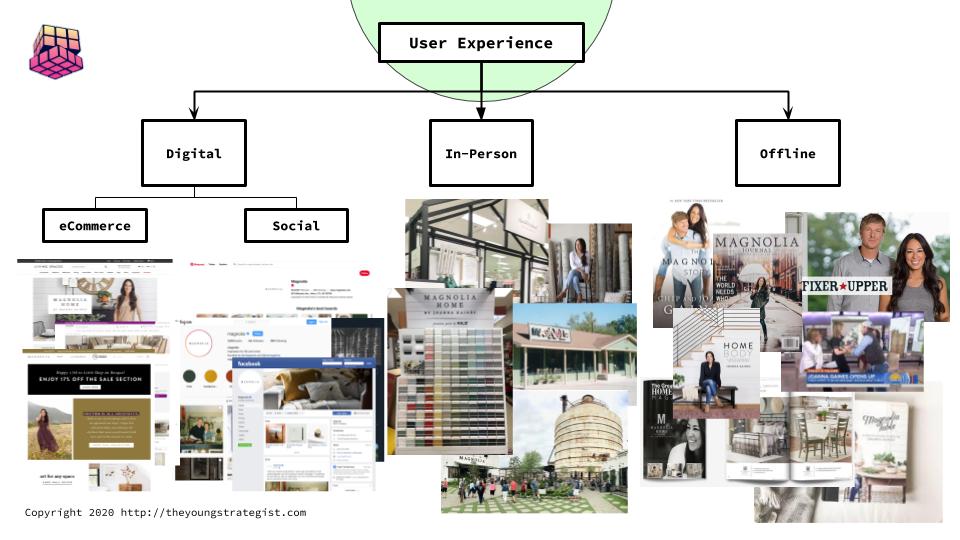
Value
The old days of getting as many people as possible to fill out a form with trick design and dark patterns are, I hope, long gone. People don’t want to see you demonstrate the art of a “deal” – they want value. Modern value generation is about curating an experience and keeping prospects engaged, creating a space where they feel comfortable and ready to introduce themselves, not bombarded with content overload. It is subtle, unseen, and built into the fabric of every campaign. The days of the blind form fill are over.
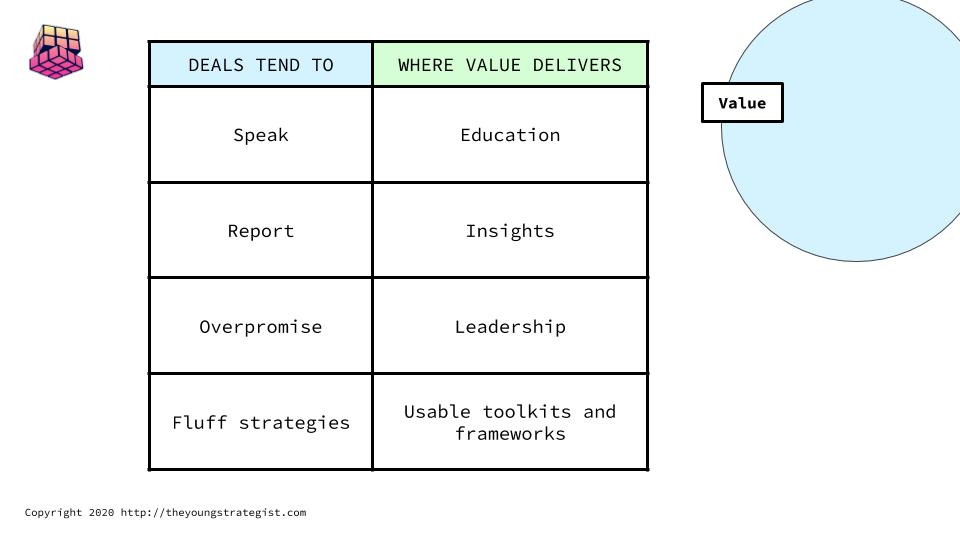
Going Beyond Foundations to Create Dynamite Campaigns
Now we’ve arrived at the fun part, in my opinion. Developing effective and memorable campaigns will build on the core tenets of a demand generation strategy. Utilize tactics that are flexible, dynamic, and adapted to meet the needs of the customer to create delight; a central principle of value-based selling.
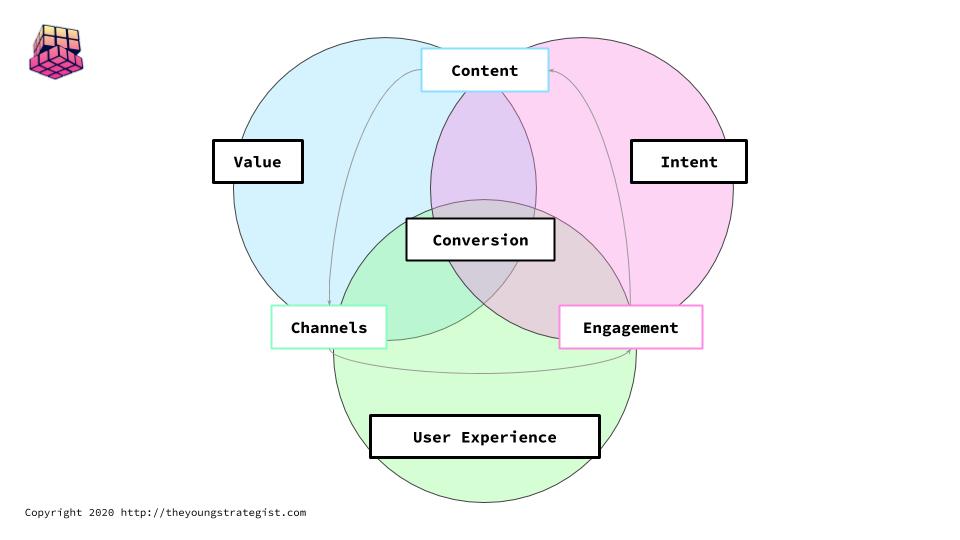
Channels
By meeting potential customers on the channels they prefer, more opportunities are created for an authentic experience. Going back to earlier touch-points, the nature of how brands engage with their customers has been fundamentally changed by the new networks of today and the future channels that are just starting to take shape.
My advice is to proceed with an open mind and don’t be afraid to experiment with new channels; just remember your ethics. Nobody appreciated a cold FaceTime call or the guy who originally came up with that idea in the first place.
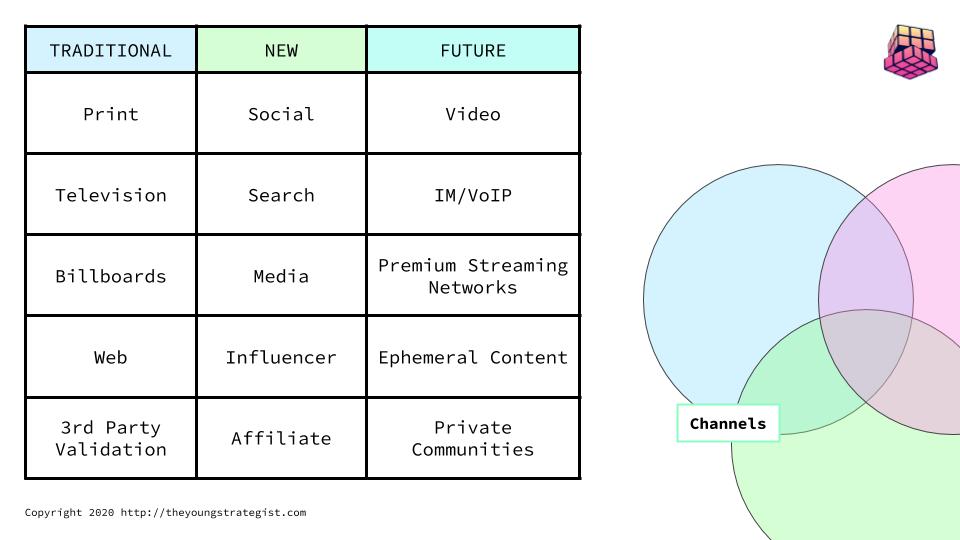
Content
Remember earlier when we talked about intent? This is where that research is put into action. Focus on shaping content marketing strategies in a way that will deliver on the value that is promised by the brand. Coordinating this can be touch-and-go, but when the right balance is found, frameworks of scale can be implemented for growth.
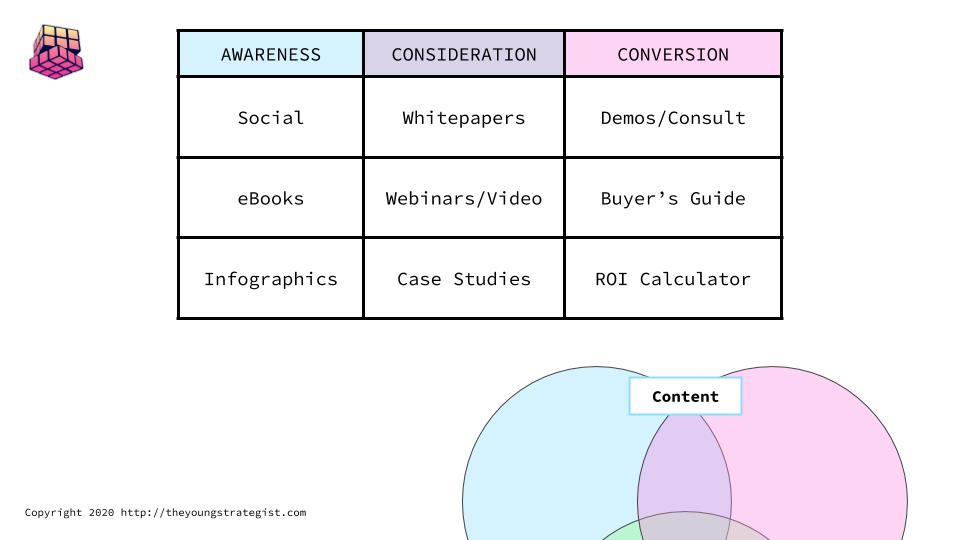
Engagement
Once you’ve generated engagement, the focus shifts on measuring those engagements to determine ROI. Let me start by saying that data is awesome, but data is so commonly featured as a solo act when we should also be thinking about data’s best friend and duet partner: context.
Having qualitative metrics that are measurable is a critical counter-balance to the pitfalls of standalone data analysis. Data without context is like an Oreo cookie without the cream; its still pretty good and you’re going to eat the cookie, but not nearly as good as the full experience. On the days we get lucky enough to stumble onto a Double Stuf? Jackpot.
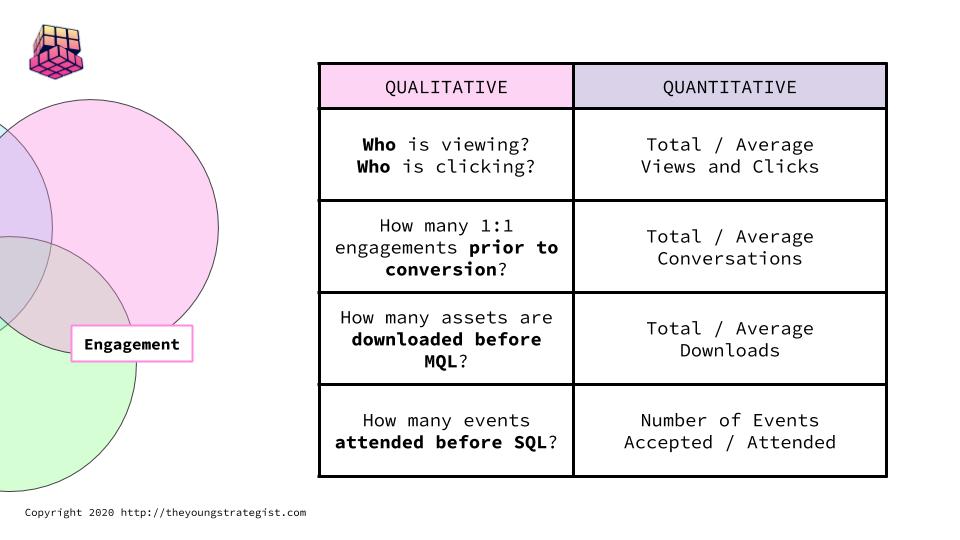
Scaling Demand Generation into Pipeline Acceleration
Winding down, my biggest issue with the traditional model of the lead funnel is the idea that lead generation is a single bucket that a prospect is tossed into. Prospects choose their adventure every time they interact with a brand and it’s worth recognizing the waste of time in trying to plan and model for all of those scenarios before they happen.
The focus is no longer around creating demand machines or lead production lines. This is a vision of developing an ecosystem of connected, measurable touch-points that span across the entire customer lifecycle and influence future strategy decisions.
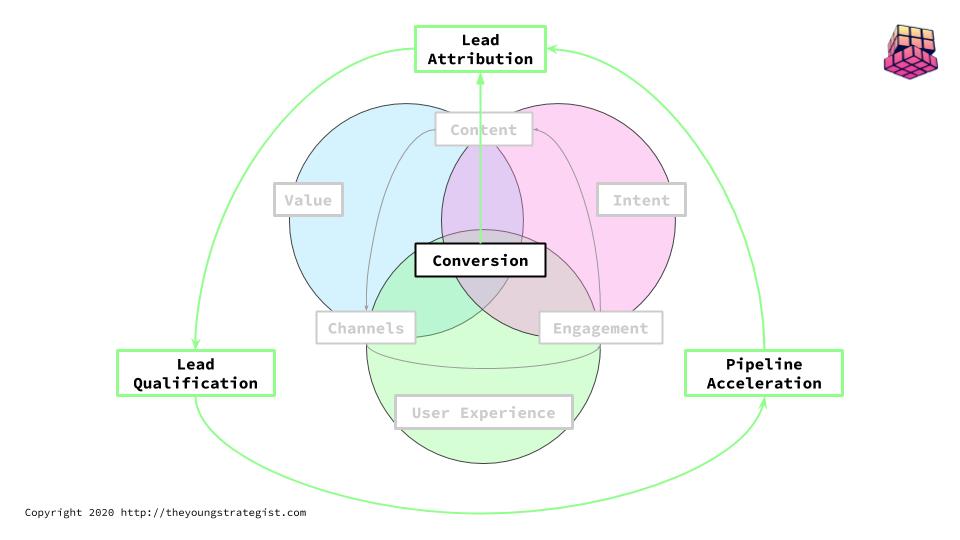
Lead attribution
If I was asked to choose a word to explain my feelings about lead attribution, it would be tricky. While attribution is sometimes difficult to wrangle for brands that have a history of dysfunctional metrics, a collective shift in mindset can help give it a jump-start in the right direction. Attribution is not the job of one person or one team, but the result of a concerted and collective effort to build measurable frameworks across the customer experience. (Remember when I said all hands on deck? I meant it!)
Education is key – and finding methods to share learnings across the org is critical to creating a general culture of attribution-first strategy development. In a framework tool I created called the Micro-Play, I leave a quote in the section that asks for the metrics related to the process being documented: “If it cannot be measured, how can it be valued?”
Note: It’s okay if the answer to that question for that specific something isn’t easily measured today, but use that moment as an opportunity to identify the gap and the need and create a plan to make actionable steps towards measurement.
Lead qualification
Attribution isn’t the only team effort involved here. When thinking about how to create lead qualification models that are effective and useful, craft them in a way that takes into account the needs of the sales and marketing organizations. Regularly schedule review and revision cycles to meet shifting needs of the business. Investments in systems of automation for lead scoring will deliver a high return value for the time saved in manual lead processing.
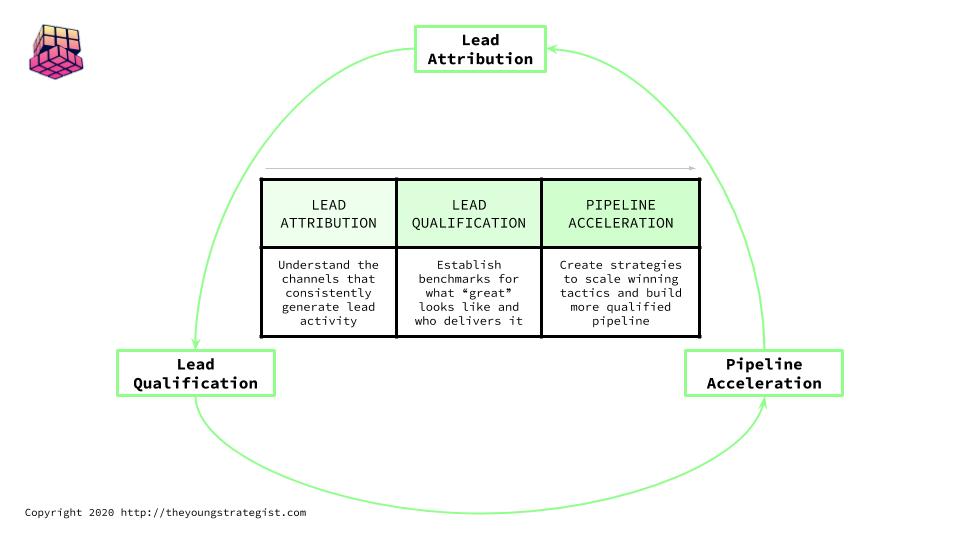
Pipeline acceleration
Once lead attribution is streamlined to feed into a lead qualification engine, pipeline acceleration strategies can begin to form around proven tactical areas. Knowing which channels have historical proof to deliver leads can also generate trust that helps drive multiple departments to commit to a coordinated, scalable approach.
